Vinyl plank flooring comes as a great alternative to hardwood. Cheaper to install, good-looking, and easy to maintain, it appeals to many homeowners. If you’ve installed it, perhaps you know already that it’s easy to clean. But how to clean luxury vinyl flooring the right way? Are there products that can damage it?
Like all flooring types, luxury vinyl flooring requires regular cleaning. You should sweep your floors daily to keep your home pristine and deep-clean about twice a month. It goes without saying that any spills must be dealt with immediately – especially if your floor isn’t fully waterproof.
With this in mind, let’s find out more about the right way to clean and maintain luxury vinyl plank (LVP) floors.
Table of Contents
Luxury Vinyl Plank Flooring Cleaning Routine
The first thing to learn about when installing LVP flooring is the cleaning frequency. Like all floors, luxury vinyl planks require regular cleaning to maintain their appearance. But unlike hardwood or tile – two flooring options that are very resistant to scratches and scuffs – LVP runs the risk of serious damage if you don’t sweep away the dirt and debris.
In fact, dirt accumulating on the floor can scratch the LVP’s protective layer. If your planks don’t have a rigid core, which is fully waterproof, moisture can find its way to the plank’s core through these scratches. Excessive moisture can lead to swelling and, eventually, rotting.
If your flooring has a rigid core, the scratches will still hinder the LVP’s aesthetic value. While you could cover the damaged areas with rugs, scratched floors can lower your property’s resale value. To make things easy, stick to the cleaning routine below.
| Cleaning frequency | Actions |
| As soon as possible | Wipe off any spills or stains |
| Daily | Sweep/vacuum and dry mop the floors |
| Twice a month | Deep cleaning with a wet mop |
How to Deep Clean Luxury Vinyl Plank Flooring
A deep cleaning may sound intimidating, but the process is quick and easy. The only thing to pay attention to is the cleaning products you use – harsh detergents and floor cleaners can damage the protective layer on top of the planks.
Tools & Supplies
- Vacuum cleaner (with hard floor brush)
- Mop
- Microfiber cloth
- Soft bristle brush
- Dish soap
- Apple cider vinegar or vinyl plank cleaner
- Bucket with water
How to Clean Luxury Plank Flooring
- Start the deep cleaning procedure with your daily routine: remove surface dirt. The easiest way to do this is with a vacuum cleaner, using the hard floor brush for more effective cleaning. Alternatively, you can sweep the floors with a broom or sweeper and remove the excess dirt with a dry mop.
- Inspect the surface of the floor for any stains. Older stains are harder to remove than fresh ones, especially if your flooring has a texture – that’s why you should deal with any spills or stains as soon as possible. However, if you’ve missed a spill or spot a stain you didn’t know about, you can use soapy water to remove it. Mix some dish soap with lukewarm water and use a soft bristle brush to scrub away the stains. For particularly stubborn stains, you can try scrubbing with baking soda paste or isopropyl alcohol.
- Once the stains are removed, wet mop the floors to remove any residual dirt and grime. The best luxury vinyl plank cleaner is a homemade solution of apple cider vinegar and water (you can use any kind of white vinegar if you don’t have apple cider vinegar). Dilute a cup of vinegar into a gallon of water and mop the floor in the direction of the planks. Alternatively, you can use vinyl plank cleaner.
- Whether you have water-resistant or waterproof flooring, it is recommended to dry out any excess water with a microfiber cloth as soon as you’re done with the mopping.
- Repeat this procedure every two weeks to keep your floors in good condition for longer. Households with pets and kids may find it necessary to deep clean the floors more frequently.
Does LVP Flooring Need Waxing?
High-end LVP flooring can mimic hardwood so well that many homeowners wonder whether they should wax their floors or not.
In a word, no. LVP flooring doesn’t need waxing. Moreover, wax or wax-based products can actually damage the vinyl finish. If your vinyl floor is older and looks worn out, you can freshen up its aspect with a coating of vinyl flooring sealer or transparent acrylic.
If you decide to use an acrylic finish, remember that high-speed buffing can penetrate into the layers of the floor and could cause them to separate over time.
LVP Cleaning Tips & Tricks You Need to Know
1. Use a doormat and sweep frequently
The easiest way to clean luxury vinyl plank flooring is to prevent it from getting dirty in the first place. Dry water and mud stains can be difficult to clean. Your dirty shoes can also bring in small pebbles and other debris that can scratch your floors.
A doormat can help you remove some of the dirt and asphalt chemicals before you step inside the house.
Furthermore, you should also sweep the floors as often as possible. As a rule of thumb, try to sweep the dirt from the entryway at least twice a day and the kitchen and dining area after each meal.
2. Clean makeup and hairspray with shampoo
Cosmetics, makeup, and hairspray can sometimes land on your vinyl flooring, where they tend to grip to the surface. While you may struggle to remove these stains with vinegar or plain water, hair shampoo can do wonders in removing them. Scrub the area with some shampoo and a soft brush, rinse with plain water and dry the floors with a microfiber cloth.
3. Rinse well after using soaps or detergents
While apple cider vinegar is the best cleaning agent for vinyl flooring, you can also use commercial cleaners. If the bottle doesn’t specify that the product needs no rinsing, make sure to rinse any detergent traces off your floors.
You should also limit the use of chemical products. Until your floors need a deep clean, limit to mopping with plain water if dry mopping doesn’t remove the dirt and stains. When using a floor soap, it is recommended to use two mops, one for washing and another for rinsing.
4. Outfit your furniture and appliances with floor protectors
Heavy furniture and appliances can damage your vinyl floors. These scratches can allow moisture to reach the inner layers of the floor, but you can prevent scratches by fitting your furniture and appliances with felt or rubber floor protectors.
Mistakes to Avoid
Never steam clean your floors
Mopping your floors can be tedious, especially if you live in a big home. Using a steam mop could be tempting; however, you should never steam mop LVP floors.
While all vinyl floors are at least water resistant, none of them are designed to resist steam. Vinyl is a type of plastic, and, like all plastics, it can lose its shape when exposed to high temperatures. Hot steam can also damage the protective top layer.
Instead of steaming the floors, stick to traditional wet mopping and use apple cider vinegar to disinfect the surface.
Don’t use highly abrasive scrubbers
Some stains may require serious elbow grease to remove, but you should never use highly abrasive scrubbers like steel wool and other rough materials.
An easy way to deal with particularly stubborn stains is by scrubbing them with a thick paste of baking soda and water.
Never use ammonia or bleach.
Choosing the right cleaner for vinyl plank flooring can be challenging, mostly because most floor cleaners contain ammonia. However, this substance doesn’t pair well with vinyl. It can degrade the protective layer of your flooring and damage the inner layers.
Bleach is another common ingredient in floor cleaners. Like ammonia, bleach can lead to corrosion or damage the vinyl finish.
That’s why apple cider vinegar – or any white vinegar, as a matter of fact – is your best choice when looking for the perfect vinyl floor cleaner.
Down to You
We hope you now know how to clean luxury vinyl plank flooring to keep it look new for longer and prevent damaging it. Do you have other tips or tricks to share with us? Or have you used some products that damaged your floor and want to warn the others?
Tell us in a comment below. And before you go, please share these useful tips and advice with your friends.
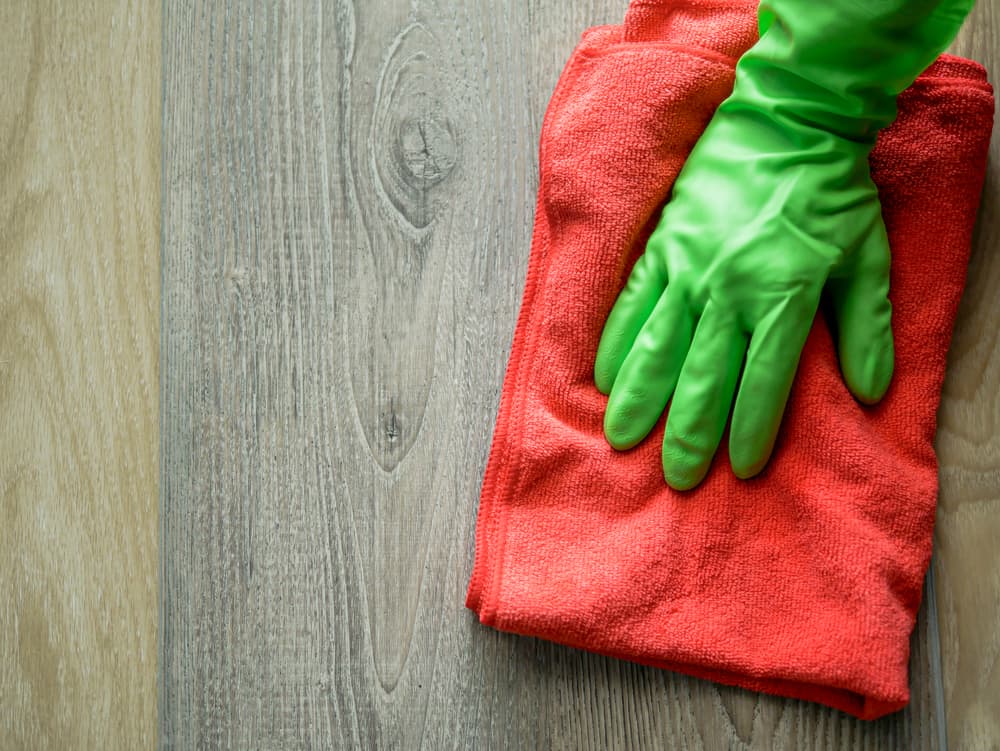
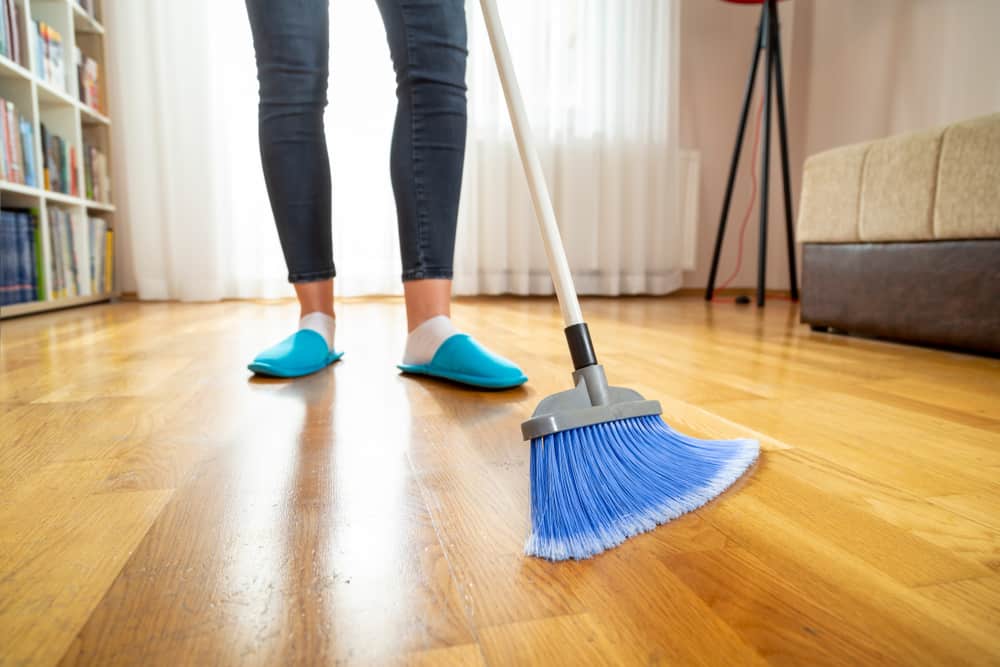
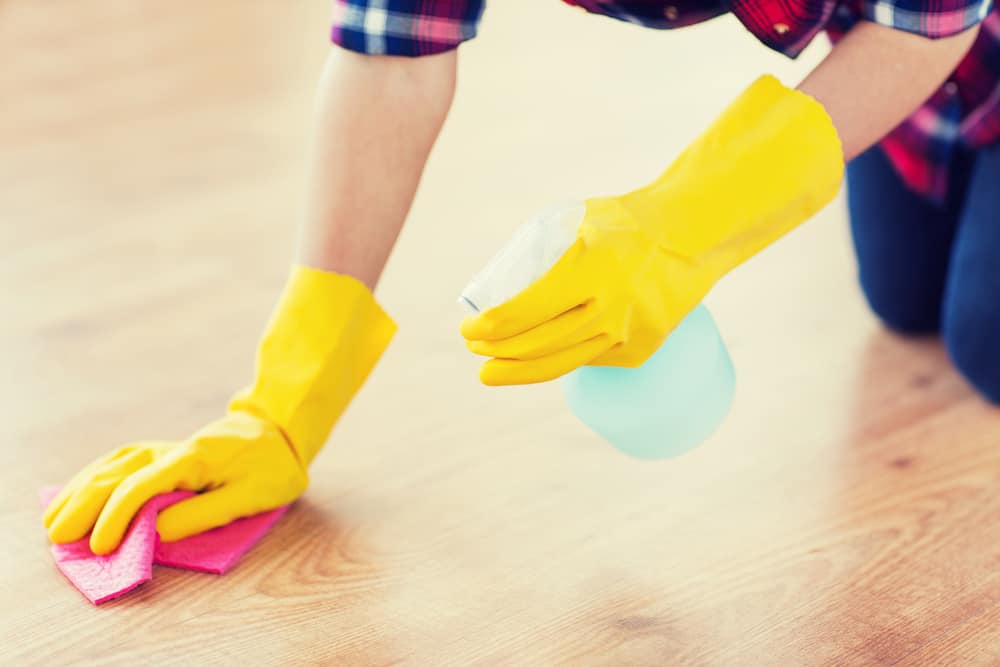
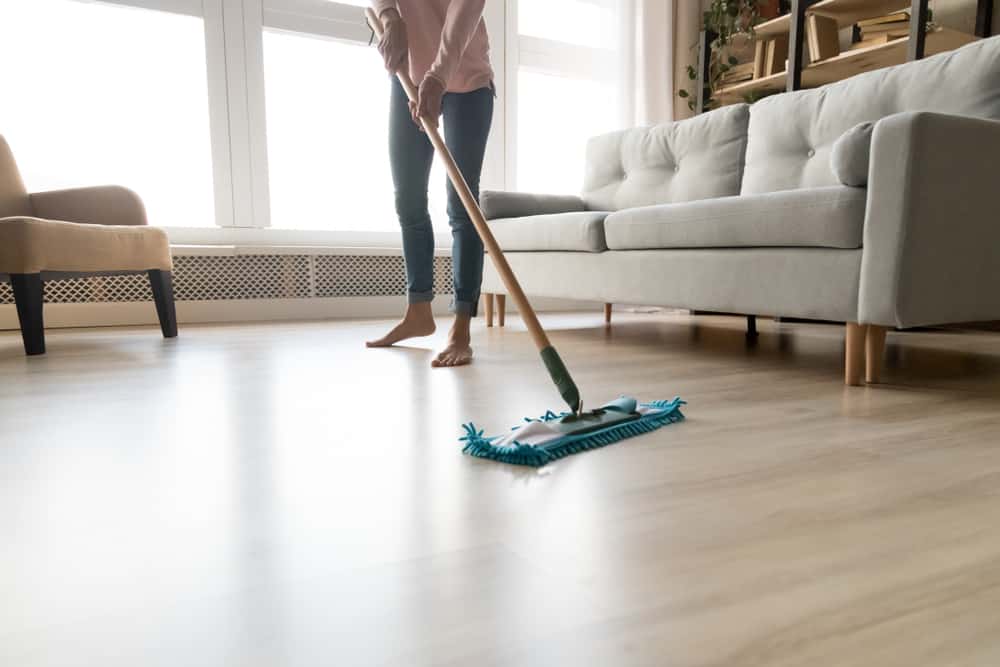
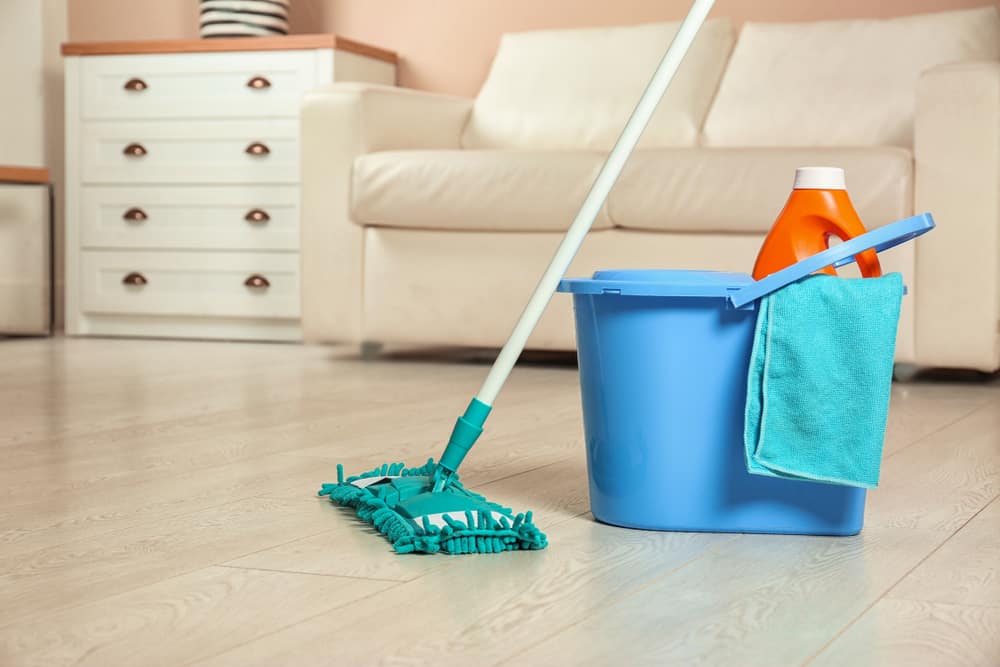
I have a rust stain due to liquid getting under a side table. Any suggestions for removing the stain?
Due to circumstances I know have a build up of black residue on my vinyl hardcore planks (Home Depot/Halstead). Halstead said to use ZEP pH neutral but this is not helping. Vac, dry dust, wet mop (either spin or sponge) total house (1B1B) and when it dries I take a wet Viva towel and test a spot – towel comes out black. Has to be built up dirt.
How can I deep clean to get rid of the built up dirt?
I just saw your post. My LVF is only 3 months old & a good quality flooring. I mop at least 3 times a week. I’ve tried warm water, vinegar & water, Rejuvenate floor cleaner and when I test with a paper towel it still shows dirt. My grandkids feet are black by the time they leave my house. Its very frustrating. I know where your coming from.
Same about feet getting dirty. Why no answer from company about this problem.
Did you find out what to do?
What if I accidentally put a floor polish on my vinyl plank floor not realizing I should not? How can I get it off safely without damaging my floor?
My new Smartcore Ultra flooring looks dull and shows every footprint. It’s clean, feet don’t get dirty, but not attractive. We just put it down in the whole house.